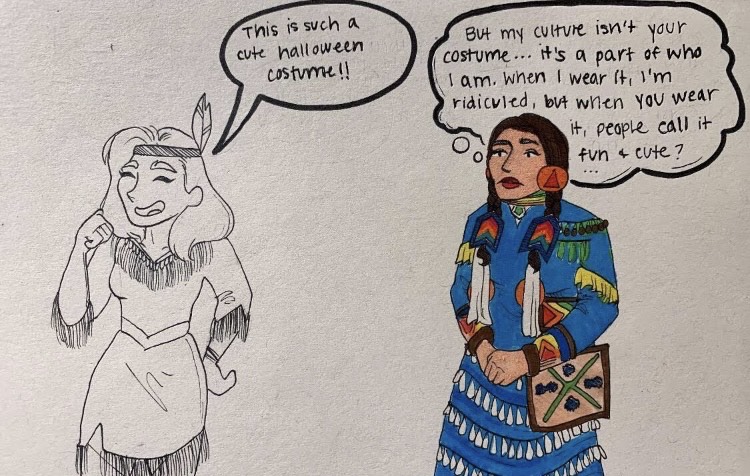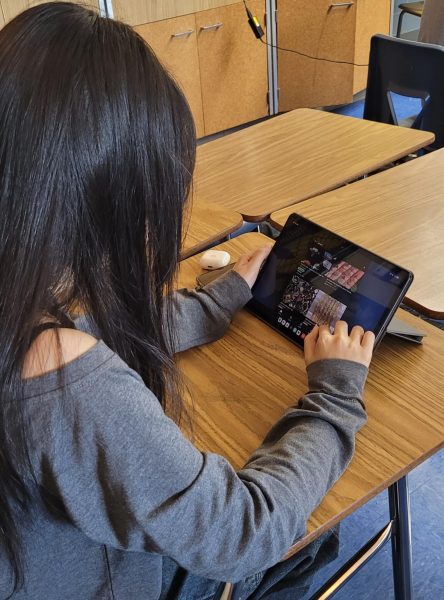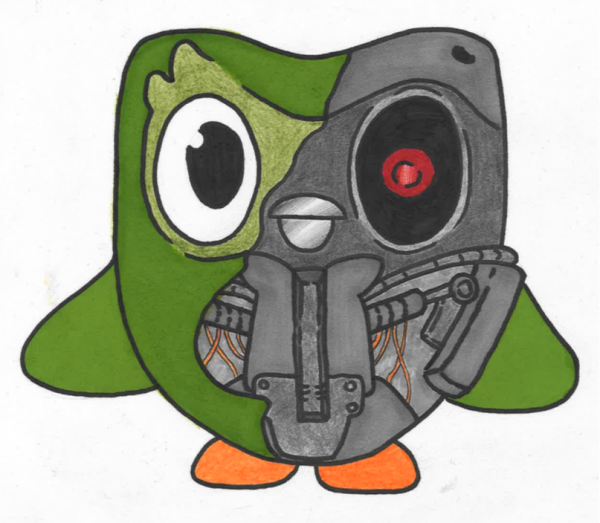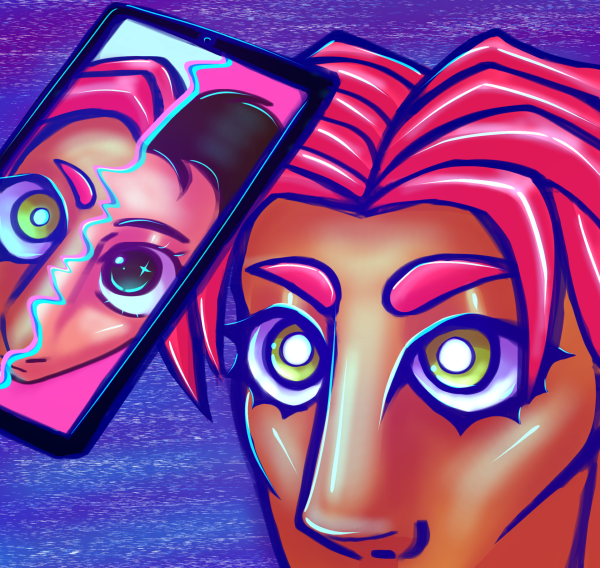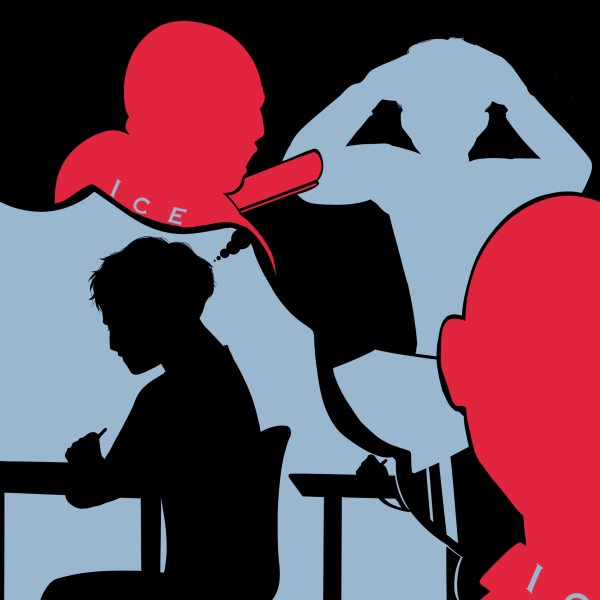Rampant cultural appropriation insults marginalized peoples
Too many people take from cultures that are not theirs for their own entertainment. Staff writer Haley Vogel urges all to consider others when planning events and costumes.
It seems that this year, when the air got colder, the wind picked up, and the leaves fell to the ground and both a literal and metaphorical cold front moved in. Just recently, the whole nation from the West Coast to the East celebrated Halloween. Yet again, people went out in costumes of someone’s culture, otherwise known as cultural appropriation. According to the Oxford English Dictionary, cultural appropriation is defined as “the unacknowledged or inappropriate adoption of the customs, practices, ideas, etc. of one people or society by members of another and typically more dominant people or society.”
So yes, some confused individuals decided this year, just as many do every year, that it is appropriate to buy something at Goodwill or on Amazon that is someone’s culture and wear it as a costume. Corporations once again also sold explicitly racist costumes this year, such as “Indian” and “Geisha” costumes, among others.
Adding fuel to the fire, people don’t notice how frequently this happens and how many cultures are often appropriated. As more and more people get exposed to other cultures and the voices of people of color, though, there are more widely called out examples of year-round cultural appropriation, such as white girls and women wearing box braids and other traditionally Black hairstyles.
In particular, locks are appropriated here in America quite often. There is a difference between someone of Viking descent wearing their hair in a locks because it is the culture of their ancestors, but a white person without any real connection to a Scandinavian lineage from America wearing them doesn’t make much sense. Many wear these hairstyles with deep cultural roots without even knowing the significance. Much more common, for example, is that locks can be traced back to Egypt, India and other African countries, long before white Americans started wearing the hairstyle.
“It bothers me because I feel like it’s a lot of people that do it [and] don’t understand the culture behind it,” Kennedi Dudley (11) said.
Another example are people who put chopsticks in their hair “because it’s cute.” They most likely saw an Asian woman wearing hairpins, which are a cultural accessory, but they are most definitely not chopsticks. However, you can still see people wearing the Asian utensil in their hair, mimicking traditional hairstyles. This act of appropriation is typically seen committed by adults on social media, who should know better.
“I think it’s very offensive when people mock Asian culture by putting chopsticks in [their] hair,” Danquyen Le (11) said. “If you’re doing it with normal hairpins, that’s completely different, [but] just be aware of what you are doing.”
Sadly, even our own school has flirted dangerously close with cultural appropriation. In September, students initially planned to dress “like a Hawaiian” for the football game. As soon as the idea was brought to the staff’s attention, it was shut down, and people brainstormed an idea for a new name. The new name for the themed game day was Beach Day. However, there were still students dressing up in Hawaiian-inspired clothing including Hawaiian-style shirts and fake leis.
Many mainland American schools have used Hawaiian as a theme for years. As someone who has lived in Hawaii in the past but is not of Hawaiian descent, I feel that it is wrong to have a Hawaiian theme for a party or a get-together. It is someone’s culture and way of living, not a party theme for your enjoyment. Wearing leis here in Minnesota is very much not a part of our culture, despite how normalized it’s been in pop culture and fashion for a number of years.
In the end, cultural appropriation happens all the time. You may not personally notice, but the people whose culture you are stealing definitely do. So don’t dress up as an Egyptian or Native American for Halloween or any other themed party or celebration. Don’t put chopsticks in your hair because it’s the next big trend. Be thoughtful when going for a new hairstyle. Look into the history of the cultures before you decide. Be more open-minded and more friendly to people that might look different than you. Remember, everyone has a heart no matter what you look like; we are all humans at the end of the day. Speak up if you see something or someone participating in cultural appropriation.
Remember, it only takes one person to create a change.

Haley Vogel is a Staff Writer for The Heights Herald. She is a hard-working and kind person who is passionate about poetry, student council, key club,...
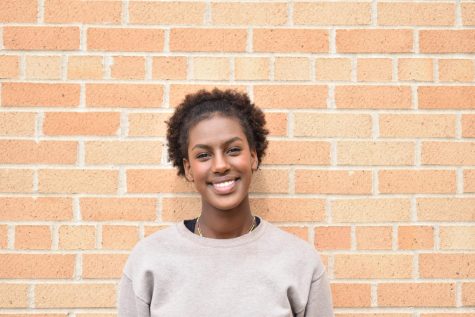
Lidya is a senior Staff Writer and Illustrator for the Heights Herald. When she's not writing for the school newspaper, you can find her playing soccer,...


